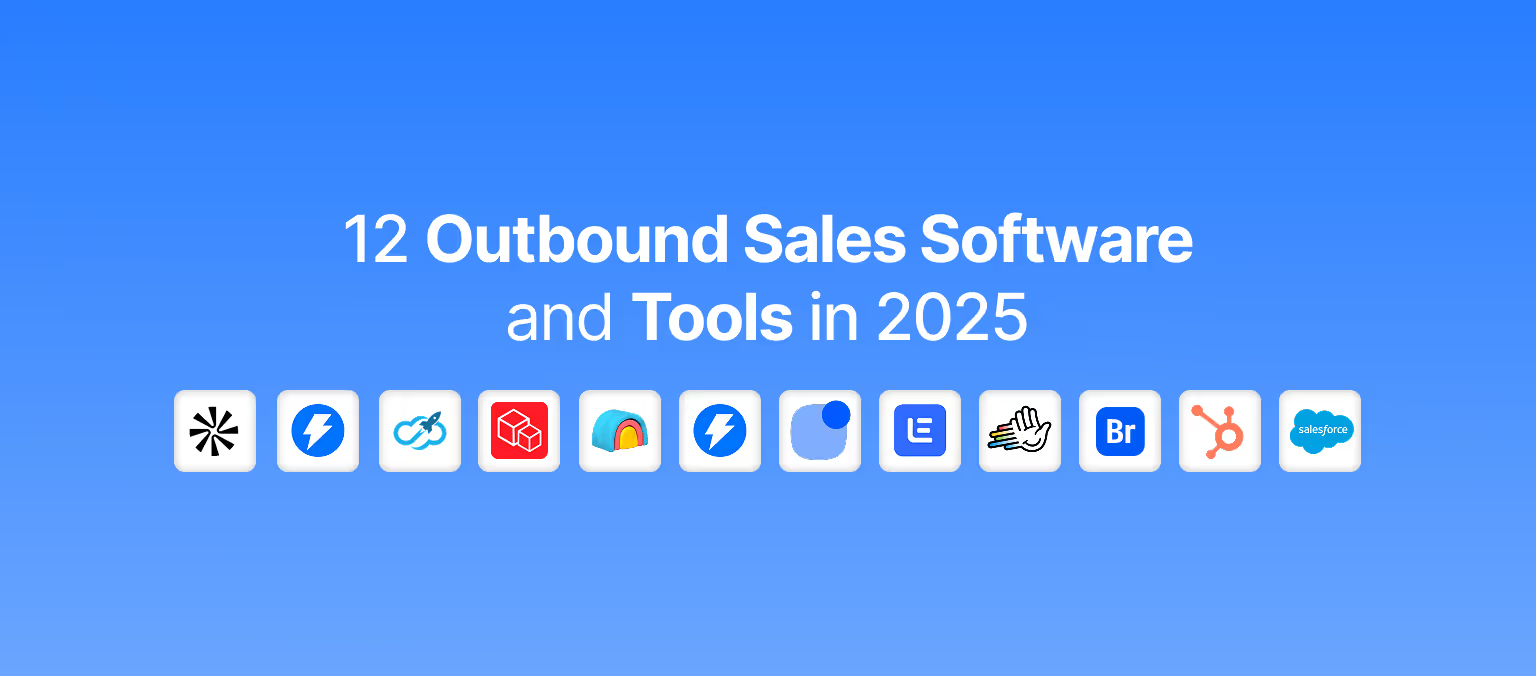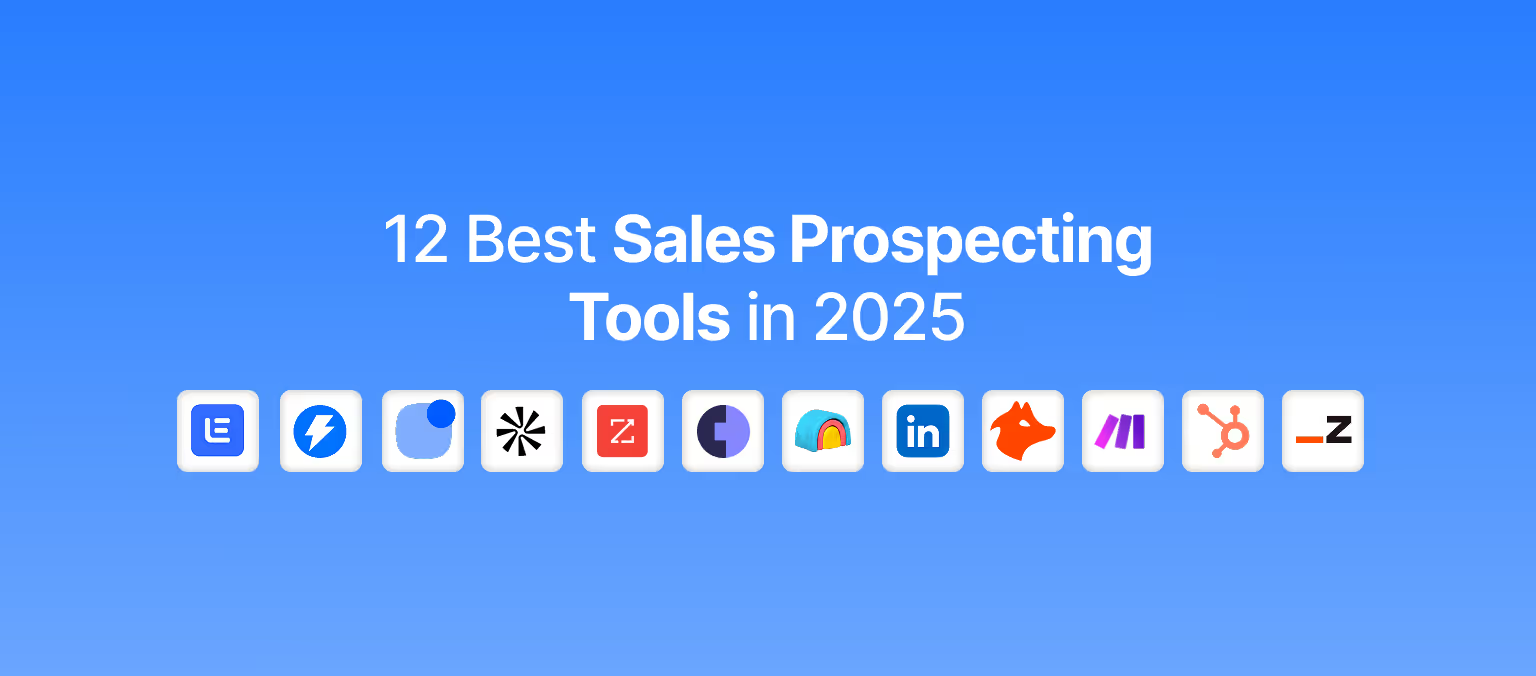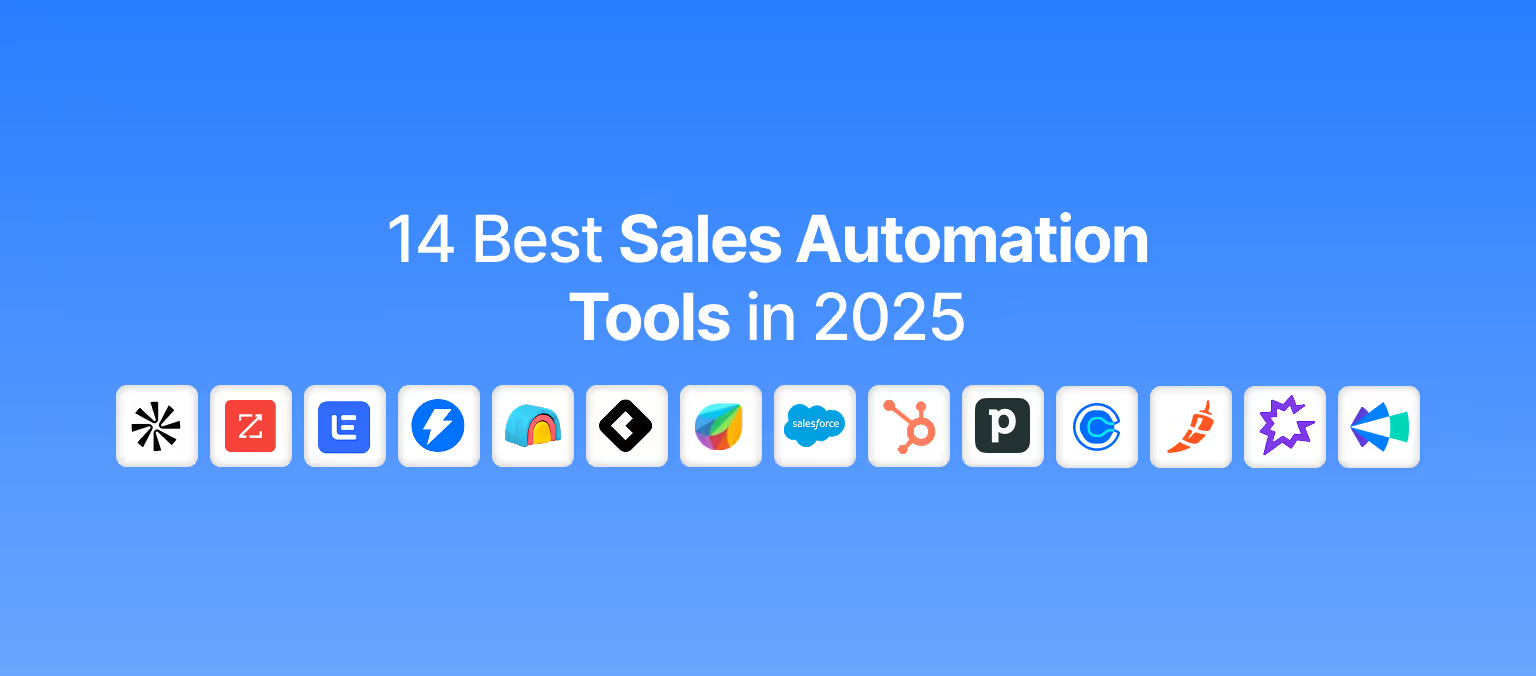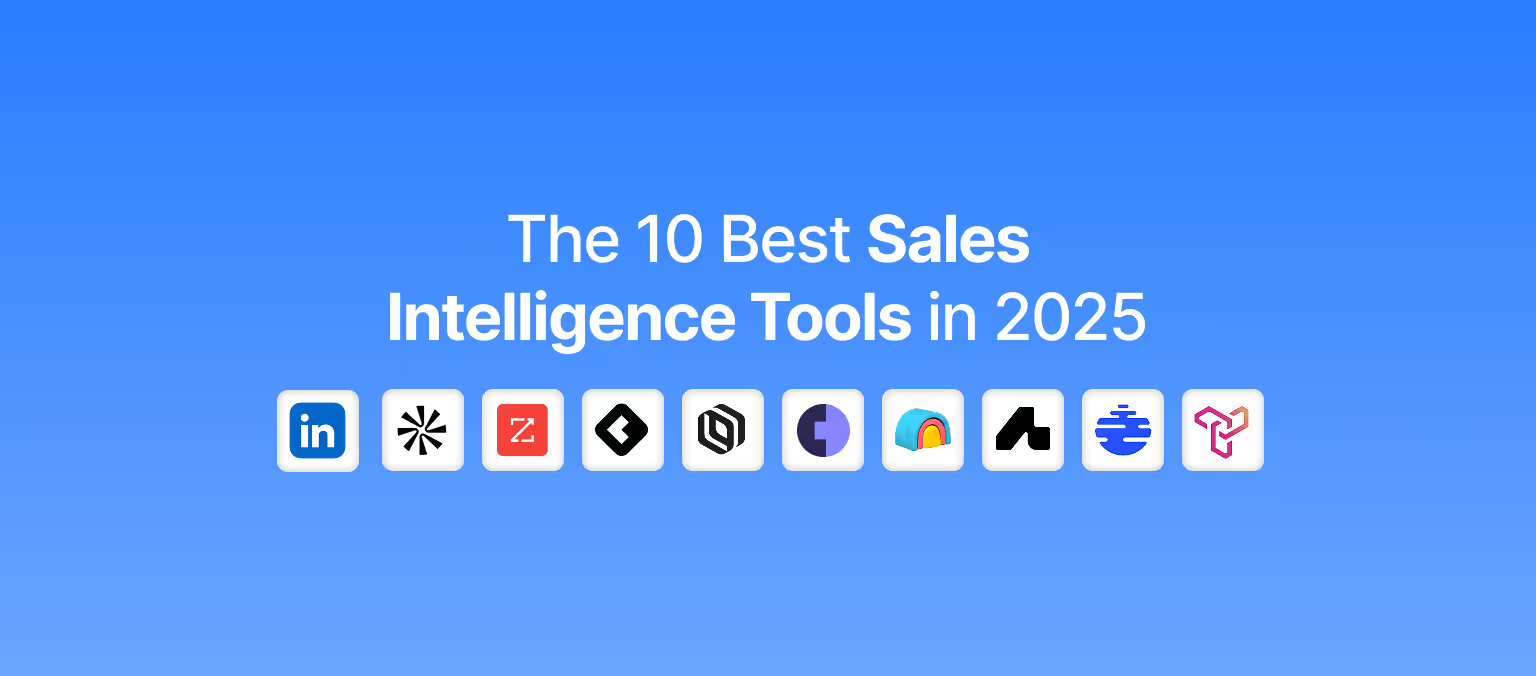The Ultimate Sales Tech Stack for Outbound Agencies in 2025
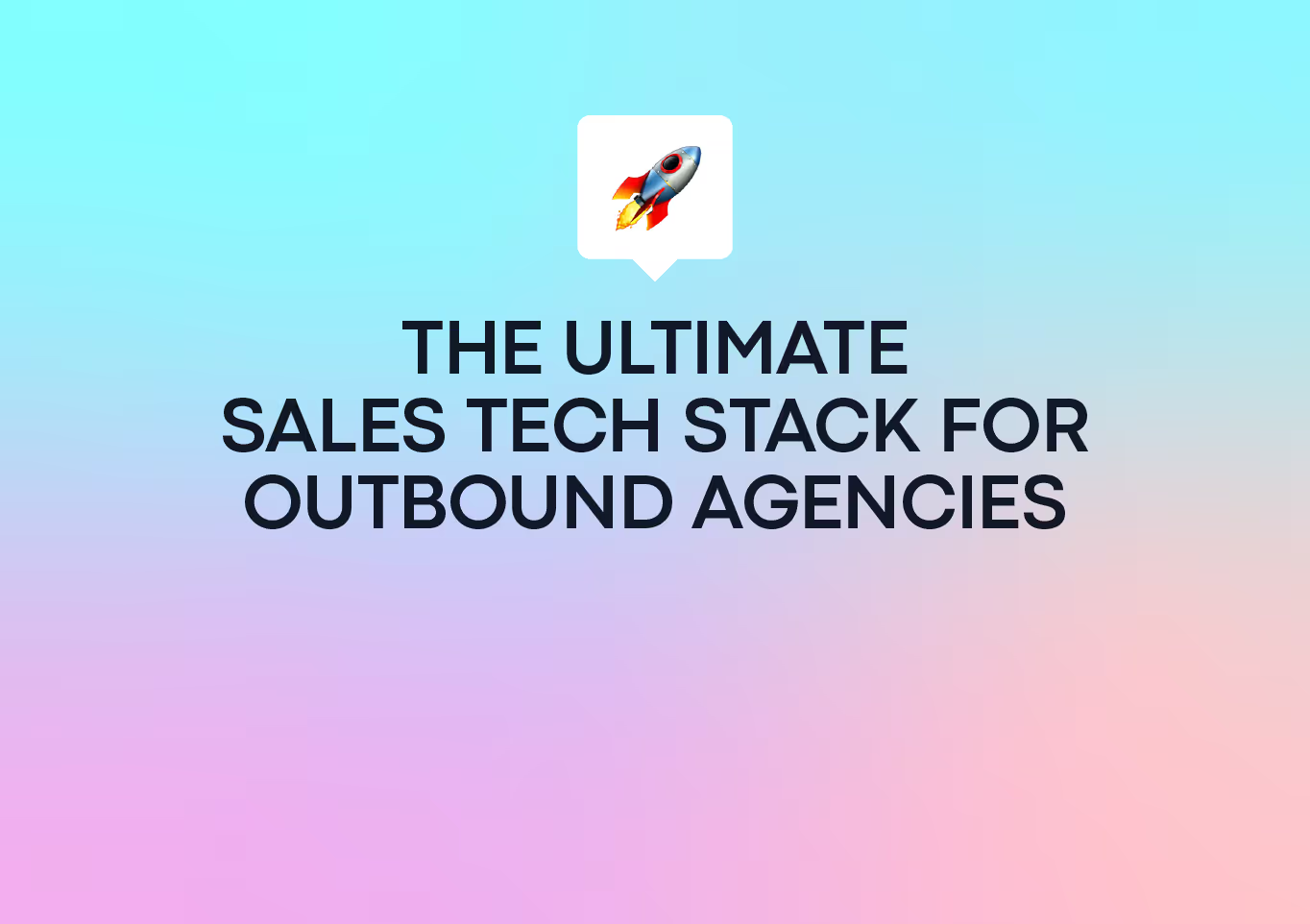
Every outbound agency’s ultimate goal is to close more deals and generate revenue for your client. However, you need to equip your team with the right tech stack to achieve this.
This sales tech stack streamlines your processes with automation and optimizes your workflow. Plus, they help you better manage your time, boost your team’s productivity, and ultimately drive more sales for your clients.
But what software do you need to add to your sales tech stack? Let’s explore the answer in this article.
What is a Sales Tech Stack?
A sales tech stack is the various software and technologies your sales team uses to perform their job. These sales tools and technologies streamline their sales processes, enabling them to work more efficiently and maximize their productivity.
Every sales professional’s goal is to close as many deals as possible with the least time and energy. As a result, they require the right sales tools and technologies to engage the prospects, manage their communications, and accelerate revenue growth.
For this reason, it’s essential to invest in the right sales stack to scale your team members’ operations efficiently. But what are these solutions? We will explain everything below.
What to Consider Before Building Your Sales Tech Stack
Before you choose the exact sales software stack for your business, here are some factors to consider for determining the right vendor.
1. What are your company’s needs or pain points?
Many sales software were designed to solve a specific problem within the sales process. While some sales tools automate your prospecting efforts, another could help manage your sales conversations more effectively.
Your goal is to identify these pain points and find software that can solve it. This would cut down monotonous activities and increase productivity among your sales teams.
2. Does the tool require much work to implement and manage?
Before you add a new piece of sales tech to your stack, you must also consider the amount of effort required to implement it.
Ask yourself these questions. Will the tool require lots of work from the IT team to set it up and have it running? Does the tool require significant resources (time and effort) to manage and maintain it?
If your answer is yes, you should consider other solutions for your business. You want to select a tool that requires the least effort during implementation and maintenance.
3. Can the tools help to achieve your company’s KPIs?
Every sales tool you include in your tech stack must align with your business’s goals and targets.
Does the tool improve efficiency in your workflow? Does it enhance customer experience? Does it accelerate revenue growth? Does it measure specific metrics?
Clearly defining how each sales tool can achieve your business goals ensures you invest in the right tools that deliver results.
4. Does the tool integrate with other technologies in your stack?
Another factor to consider is integration. Can the new software integrate easily with other tools? Are there new extensions you can easily add to your browser? Do these integrations add more value to your business? You need to ask these questions before you build your tech stack.
If your sales tools seamlessly work together, it minimizes manual data entry and reduces errors among your sales team. Plus, you get a holistic view of customer interactions and streamline your sales workflow. This boosts your productivity and contributes to better decision-making.
5. Does the tool support future changes and growth?
If a tool only focuses on your current business’s needs, it may not be suitable in the long run. Besides, changing tools frequently for future changes can disrupt your sales workflow
As a result, you want to choose tools that accommodate new changes and support future growth. This will help to achieve higher efficiency and accelerate sales growth.
Solutions and Software You Need for Your Sales Tech Stack
Now that you understand what you need before building your sales tech stack, let’s look at the technologies that make up the stack.
Content Tools
Your content creation tools can help attract, generate, and retain qualified leads for your business. It builds trust and establishes credibility in the minds of your target audience, encouraging them to try out your services.
The software you need:
LinkedIn — For Content Creation
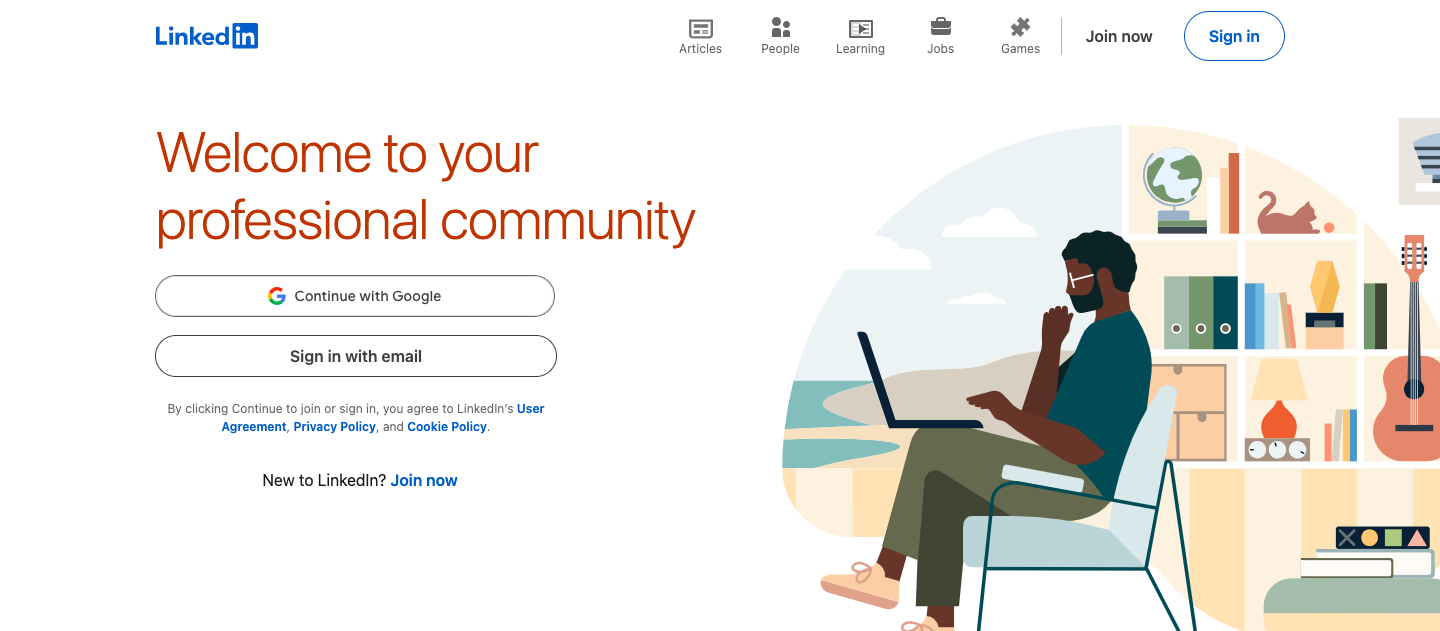
Posting various types of content on your LinkedIn page is one of the top ways to attract warm, qualified leads for your business. This approach positions you as a knowledgeable source, building trust and establishing credibility with your potential customers.
To get started, ensure you create and publish various types of content — such as blog posts, infographics, carousels, videos, and more — tailored to your audience’s interest. This drives engagement and enables you to stay relevant on the timeline.
Additionally, join various conversations on the social network. Responding to comments, answering questions, and contributing opinions on topics showcases your expertise and develops relationships with your audience.
Plus, posting regularly on LinkedIn increases brand awareness, revealing your business to new eyes within the industry. For instance, if all the connections you have on LinkedIn are professionals within your industry, every content you post will get exposed to a new audience.
Let’s say someone likes a post you published, that post will show up on the feed of a new lead who can click on your profile and subsequently connect with you. Engaging in this process frequently shows your credibility and prompts new audiences to initiate conversations with you.
The tools for LinkedIn:
- Canva
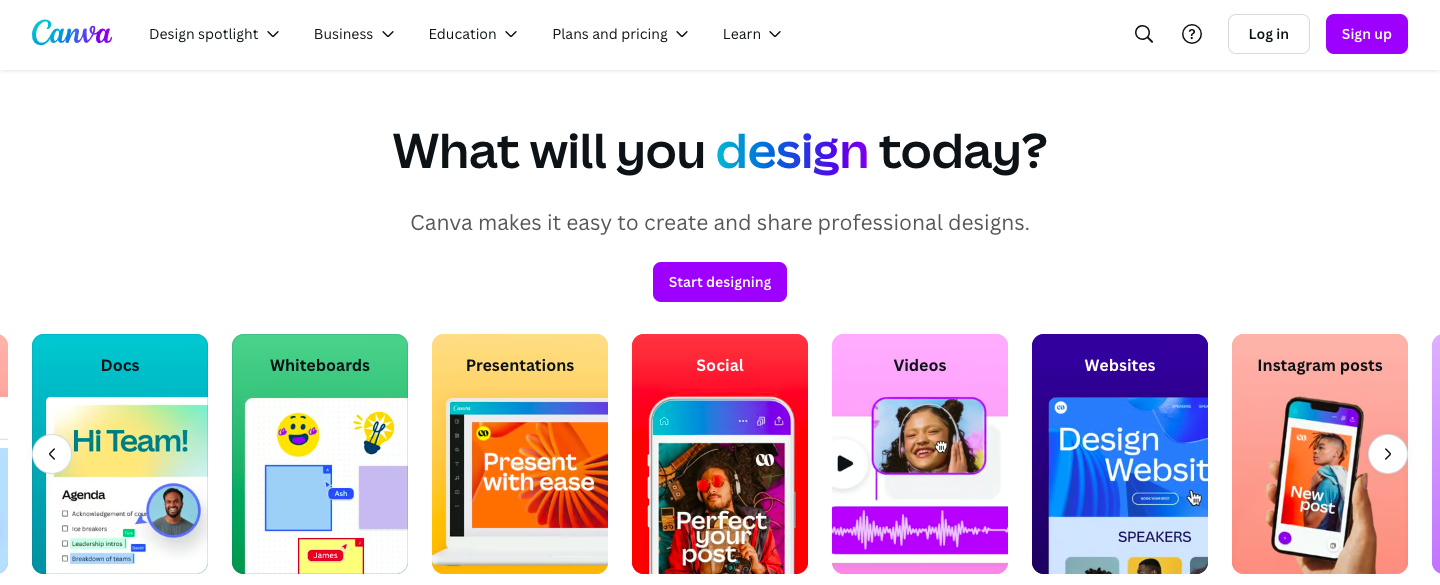
Canva has a collection of useful, professional templates for different types of content. These templates are categorized by various themes and topics. For instance, you can choose either social graphics or posters for your content marketing strategy.
Each template is optimized with the right dimensions for specific purposes such as cover photos, banners, posts, headers, and more. You can also find templates tailored for specific platforms like LinkedIn, Facebook, Instagram, and more.
Thanks to these templates, you don’t have to design from scratch or hire a professional designer to handle your design needs. All you need to do is select one of the templates and customize it to suit your preference.
- Taplio

Another tool to enhance your content creation process is Taplio. The AI-powered LinkedIn content creation tool streamlines your content creation and scheduling process, enabling you to expand your network, reach your audience, and manage your online reputation.
This tool offers an intuitive interface that enables you to create, schedule, and analyze your LinkedIn posts. It can generate content ideas about a specific topic, find your audience's pain points, and create posts tailored to your personal brand.
Additionally, it features a content calendar for planning posts and analytics to track engagement metrics such as likes, views, and comments. With this tool, you can manage your LinkedIn presence effectively and harness the platform’s benefits.
YouTube — For Video Content
YouTube is another powerful platform for generating leads and driving conversions for your business. With its vast customer base and global reach, YouTube offers unparalleled opportunities for your business to reach your target audience.
It allows you to leverage engaging video content with a compelling narrative to capture your audience’s interests and drive brand awareness. With features like interest-based targeting, demographic targeting, and remarketing, you can tailor your video content to a specific segment of the market, ensuring maximum reach and impact.
Additionally, engagement metrics such as likes, views, and comments can promote interactions and enable you to build meaningful relationships with your audience. This approach also increases your brand visibility, amplifying your reach to new leads on the platform.
YouTube can also establish your business as an expert and thought leader through informative and engaging content. By sharing valuable insights and industry knowledge, you can position your business as a trusted advisor and reputable source of information.
The tool for Youtube:
- Tella — For Screen Recording

Tella is an AI screen recorder designed to make screen recording easy for you. It’s a perfect tool for founders and creators who make lots of videos about tutorials, courses, and demos for their products or services.
With Tella, you can record several videos in small, manageable clips. You can also edit these clips to suit your preference in less than a minute.
Additionally, the video recording tool comes with speaker notes to help you stay on track during your recording session. It also generates subtitles when you share the videos to various platforms such as YouTube, LinkedIn, Twitter, and more.
Surfer SEO — For Optimizing Blog Content

Surfer SEO works for blog posts. This AI-powered tool optimizes your blog content to ensure it ranks on the search engine result page (SERP). Its content editor feature provides a detailed analysis of your competitors’ content such as the number of words, headings, images, and links.
By comparing different competitors, the AI-powered tool finds loopholes you can leverage to create better content that outranks your competitors. Surfer also offers suggestions about the keywords you should target for your content. It scores your content on a scale of 100 to show how your content is optimized.
Beehiiv — For Newsletters
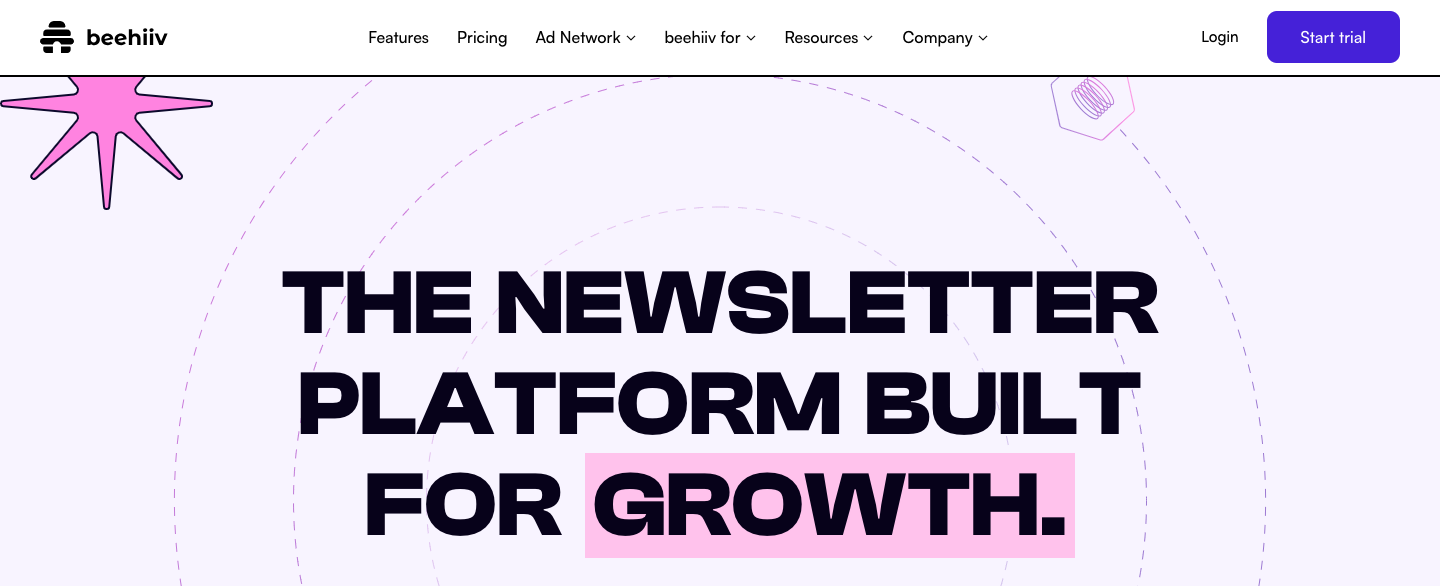
Beehiiv is an all-in-one publishing suite that allows you to scale your newsletters. It’s suitable for content creators who require a no-code solution to promote their emailing efforts. You can create, monetize, and grow your subscribers from this platform.
Outreach Tools
Your outreach tools should reduce the time and energy you invest in manual tasks. It should provide you with the capabilities and insights needed to build your sales pipelines, obtain their valid contact details, and reach out to prospects.
The software you need:
RB2B — For Identifying Web Visitors

RB2B identifies your website visitors. It works by inserting its script in your website header, enabling it to identify any anonymous person who visits your website.
RB2B also provides your visitor’s email addresses and LinkedIn profiles and forwards the information to your Slack account. This ensures you don’t miss out on qualified leads that visit your site.
Depending on the page they visit on your site and your firmographic profile, you can:
- Send your prospects automated emails with Instantly
- Connect with them on LinkedIn via Heyreach
- Do both activities with Lemlist
Data Enrichment Software
Data enrichment involves supplementing an existing dataset with additional, accurate information from various sources. It transforms raw data into valuable assets enabling you to gain deeper insights and make informed decisions.
This useful information lets you better understand your prospects and personalize your sales efforts to meet their needs. Here are a few tools you can use for data enrichment.
- Prospeo

Prospeo provides your prospect’s valid email addresses to scale your sales efforts. The software features a free Chrome extension that integrates easily with your web browser.
All you need to do is input your prospect’s full name or LinkedIn profile to enrich your database with their valid email addresses. This promotes your outreach efforts, enabling you to contact almost, if not all your prospects.
- FullEnrich
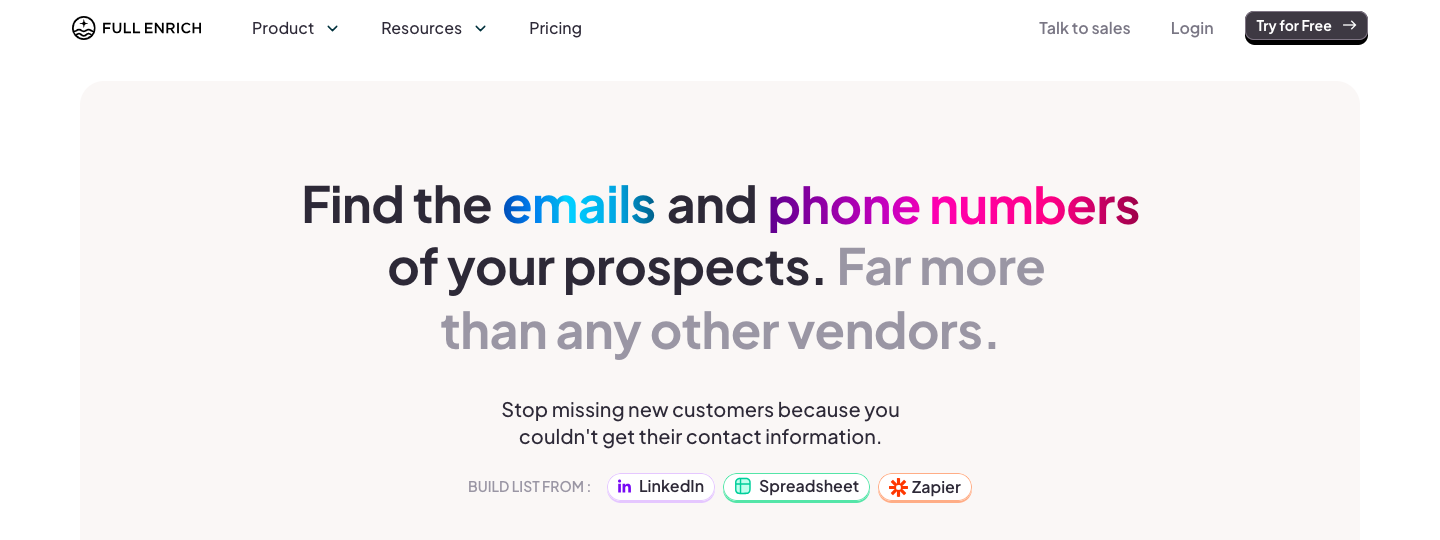
FullEnrich’s waterfall enrichment feature finds your prospects’ email addresses and phone numbers. It sequentially searches over 15 data vendors (Apollo, Datagma, Hunter, etc) to provide these valuable contact details. This ensures you reach your prospects and don’t miss out on sales opportunities.
- LeadMagic
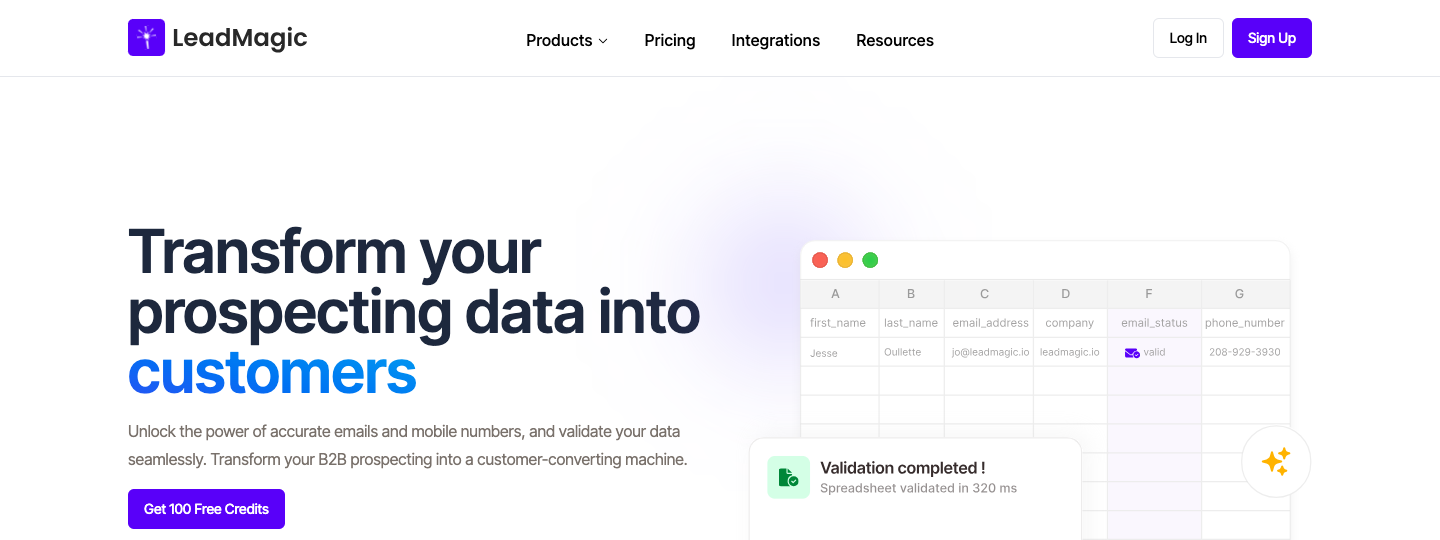
LeadMagic also provides data enrichment services to enhance your B2B prospecting efforts. Its AI technology searches various sources to provide your prospect’s valid contact information, whether email addresses or phone numbers.
- Clay
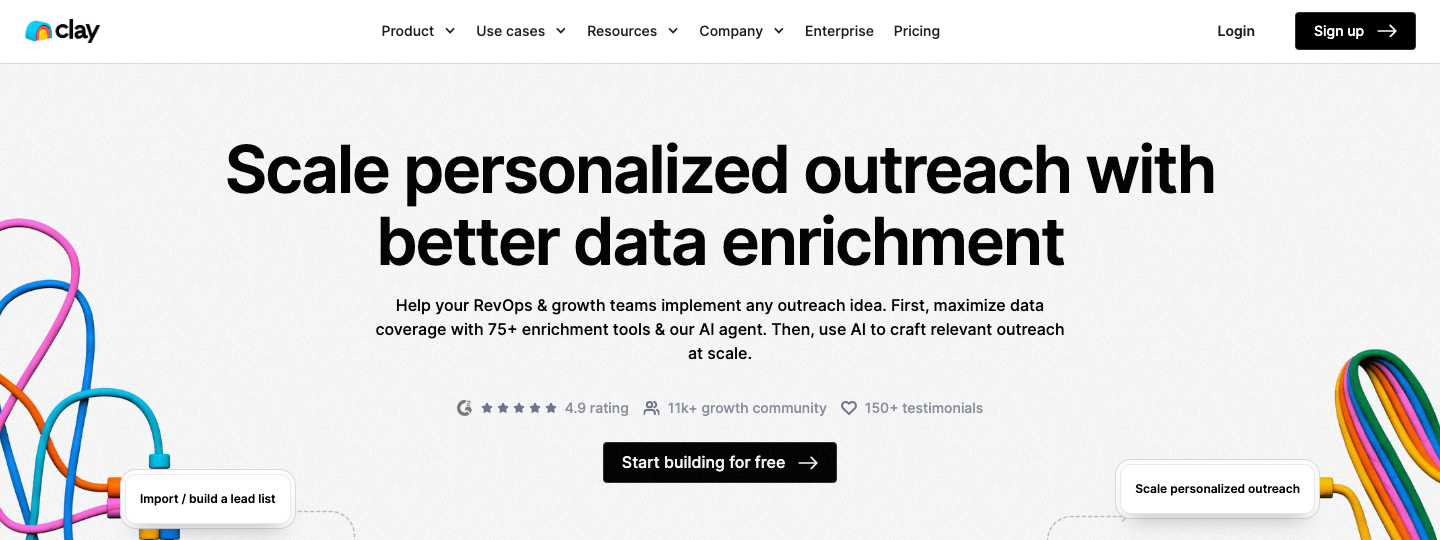
Clay’s waterfall enrichment feature is another platform you don’t want to miss out on. It assesses over 75 data vendors to ensure full coverage of your prospect’s contact information. The sales intelligence platform searches each vendor’s database to provide your prospect’s valid email addresses and phone numbers, enabling you to reach out to them.
AI Models
AI models are software that can help research your prospects and personalize your emails. The more specific information you provide for these models, the more they can enhance your prospecting and outreach efforts. Some common examples include Open AI’s ChatGPT, Anthropic’s Claude, and more.
Sales Engagement Platforms
Sales engagement platforms serve as a central hub that manages your outreach efforts. You can plan, analyze, optimize, and manage all interactions among your potential customers across various channels.
These platforms also feature a deliverability infrastructure that keeps your emails out of your prospect’s spam folder and improves your sender reputation. Here are two tools you should consider for sales engagement.
- Instantly
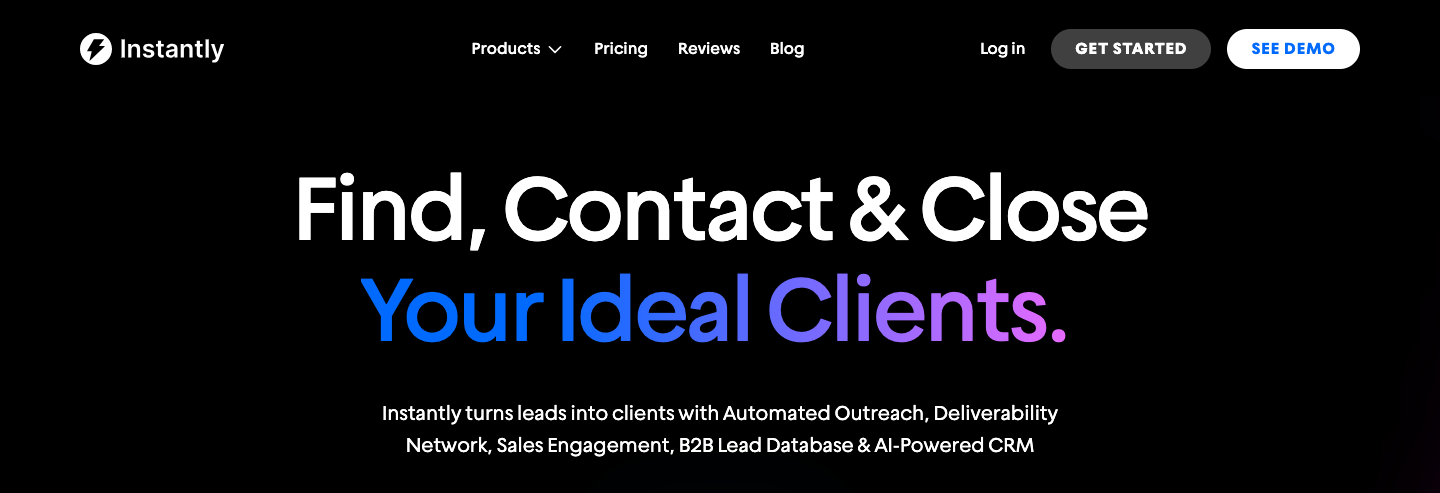
Instantly is a sales engagement platform that scales your outreach efforts with ease. Its unibox feature enables you to manage hundreds or thousands of inboxes from a single place, enhancing your engagement workflow.
You can send and receive responses from unlimited accounts, forward emails, or mark leads based on their sentiment (positive or negative). Also, its email deliverability network feature strives to keep your cold emails out of spam and reach your prospect’s inbox. This promotes communication and ensures you don’t miss out on sales opportunities.
- Lemlist

Lemlist is another sales engagement platform that delivers emails directly to your recipient’s inbox. Its multi-channel prospecting feature combines LinkedIn, emails, and cold calls in a multi-day outreach sequence, fostering interactions among your prospects. Besides, it saves you time and prevents you from manually engaging with your prospects across various channels.
Additionally, Lemlist’s warmup and deliverability booster ensures your emails get into your prospect’s inbox, rather than spam. It humanly sends the email to avoid getting blacklisted by email service providers and improving your domain reputation.
Agency Management Tools
Agency management refers to the process of leading and coordinating an organization’s complete workflow. It involves managing everything relating to an agency, from its internal staff to the utilization of its resources, for achieving and sustaining its growth.
With effective agency management, your organization can deliver top-quality services, achieve financial growth, and ensure long-term growth and success.
The software you need:
Operations
Your business requires specific tools to manage and scale its operations. This increases efficiency and drives growth within the company. These tools include:
- Airtable
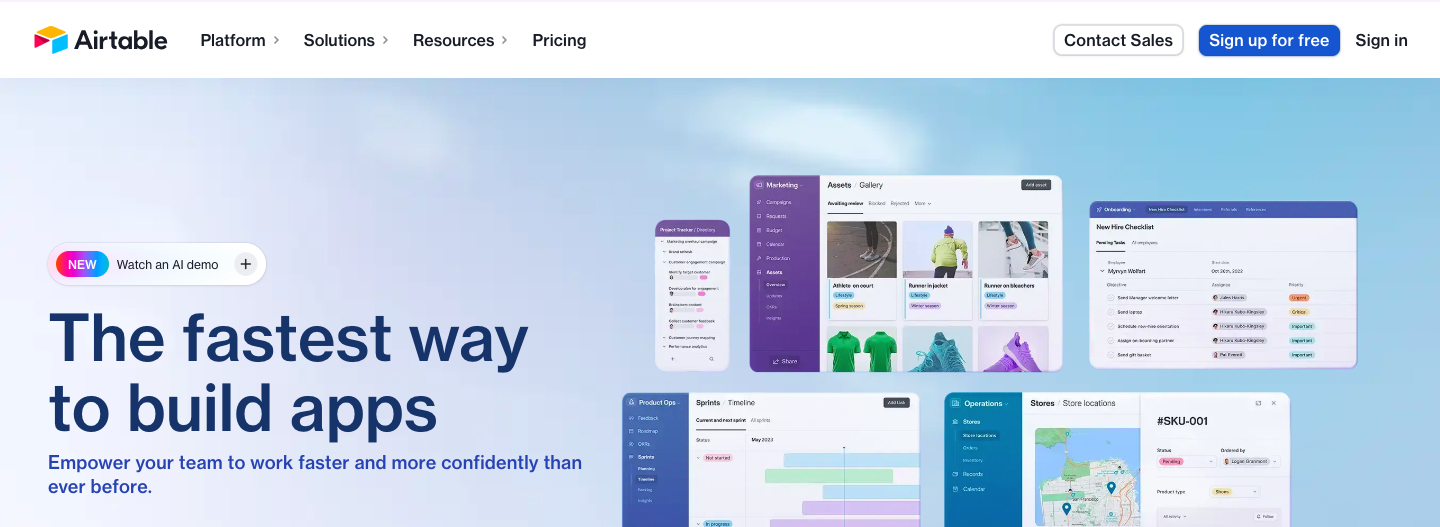
Airtable is a database management system that scales business processes and workflows. With customizable views and automation, the database management tool reduces repetitive tasks and promotes collaboration among team members.
- Puzzle

With Puzzle, you can visualize, document, monitor, and share your business’s overall system and processes. Team leaders can also map out various workflows such as assigning tasks to team members and see how they contribute to a project.
Automation
The use of AI automation tools within the agency streamlines internal processes, reduces errors, and scales various business operations easily. Here are two automation tools to consider for use.
- n8n
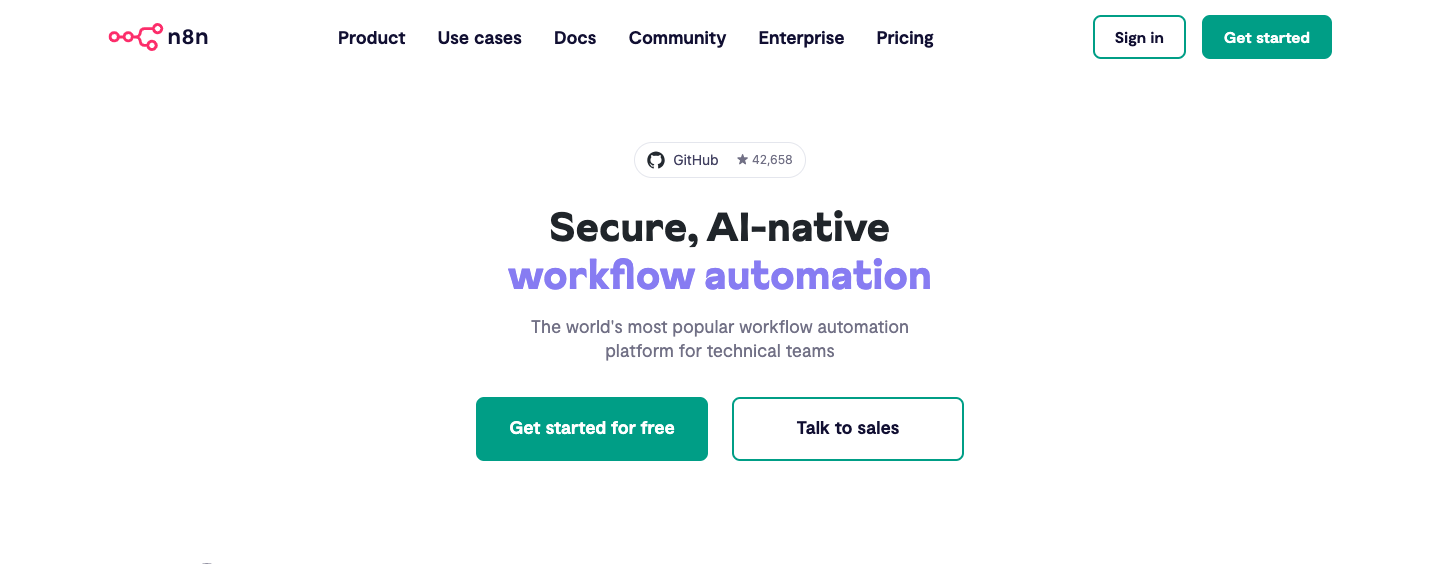
n8n is an open-source workflow automation platform for technical teams. With this automation platform, you can incorporate AI into your business processes and connect to any app or AI.
- Make
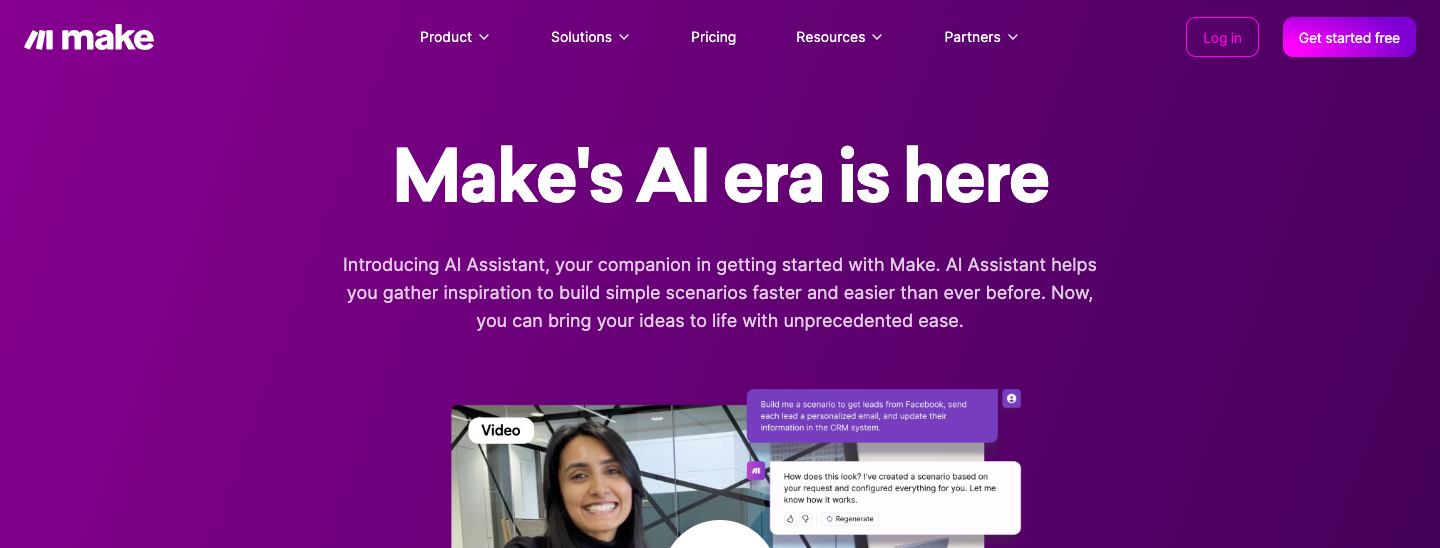
Make’s AI assistant automates your sales workflow to ensure you close deals faster. It enables you to integrate your sales stack easily to enhance various sales processes such as sales prospecting, outreach, contracting, and lead processing.
Communications
Your sales team should communicate easily with one another when the need arises. It improves work relationships and fosters collaborations, enabling them to achieve a common goal. Some popular communication tools you can consider include:
- Slack

Slack’s messaging platform facilitates asynchronous communications among team members. They can share text messages, images, documents, or tools within a single conversation.
The messaging platform also keeps important conversations in shared channels, enabling you to get real-time responses when necessary.
- Google Meet

Google Meet, designed for video conferencing, enables seamless interactions and enhances collaboration among team members. Whether it’s a one-on-one conversation, team meetings, conferences, or webinars, the video conferencing platform is flexible to adapt to your specific needs.
Sales Tools
When it’s time to close deals, you need to make the process as easy as possible. Use a simple system to manage your contracts, finalize the deal, and create a positive experience for your prospects.
The software you need:
HubSpot Meeting Scheduler

HubSpot Meeting Scheduler allows your prospects to book appointments directly from your website. The free tool integrates easily with Google Calendar and Office 365 Calendar, enabling your prospects to book a meeting with you or your sales team.
Attention
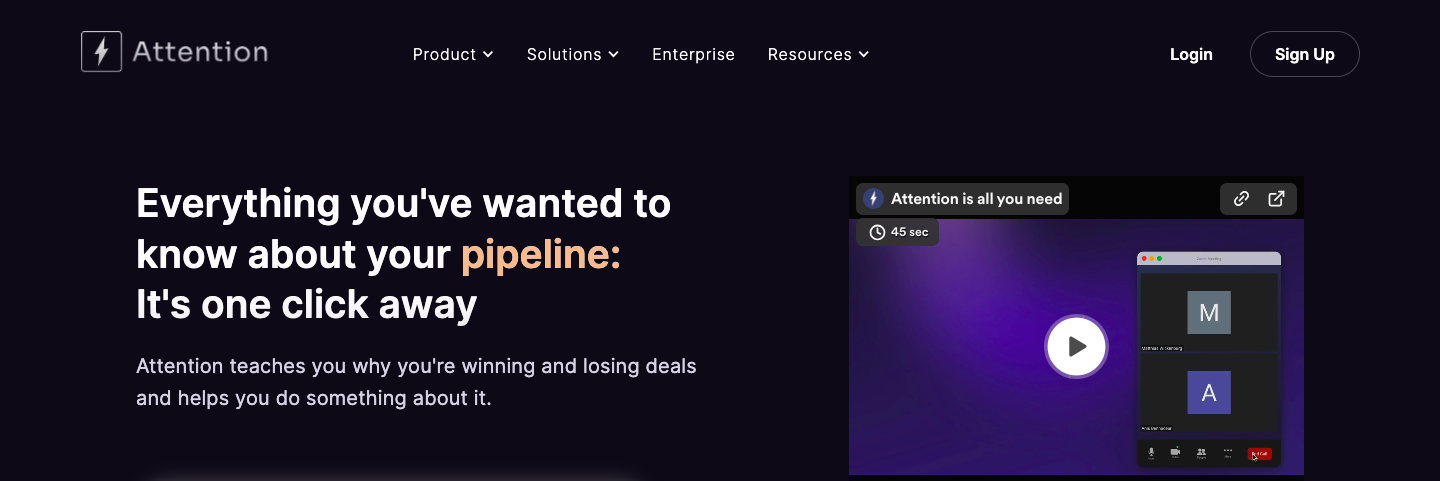
Attention is the best and easiest way to capture accurate insights around your sales conversations. You can use the tool to record and analyze your sales calls, take meeting notes, and generate insights about your customers. This enables you to make informed decisions about your customers.
Qwilr

Qwilr creates engaging, compelling proposals that capture your prospect’s attention and help your sales team to close more deals.
Finance Tools
Now that you have finalized the deals, here are some tools to help you grab the cash.
The software you need:
PandaDoc

PandaDoc enables you to create, manage, sign, and share contracts with your prospects. With its simple and automated process, you can get your deals signed quickly as it informs all parties on what they need to do.
Stripe

Stripe allows you to process payments from various customers. You should set it up to manage your revenue operations and scale your business.
Mercury

Mercury is a startup-friendly bank that enables you to accept deposits from customers. Its user-friendly interface and simple processes allow you to manage your financial operations effortlessly.
Setting Up the Right Sales Tech Stack for Your Business
In conclusion, various sales tools serve different needs. While some are fit for enriching your B2B lead list, others can help you close deals faster. The goal is to arm your go-to-market (GTM) team with the right sales stack that helps them drive more revenue growth.
If you struggle to set up this stack, we recommend hiring ColdIQ for help. With our sales team’s expertise, you can create the right sales stack that successfully challenges competition, provides unique advantages, and ultimately grows your revenue. Book a call with us today to get started!
FAQ
Focus on conversion rates, response times, and customer engagement levels. These indicators reveal how well your tools streamline the sales process and improve interactions with prospects. Tracking these helps pinpoint areas needing adjustment quickly.
Regularly schedule maintenance during low-activity periods and keep backups of data. Stay informed about vendor updates and test new features in a sandbox environment before full implementation. This approach minimizes downtime and avoids surprises.
How do I balance automation and personal touch in outbound sales?
What training practices improve team adoption of new sales technology?
Let's Get Started!
Schedule a 30-minute call with ColdIQ leadership to learn how our outbound strategy and sales tools help generate qualified leads and close deals.
.avif)
.svg)


